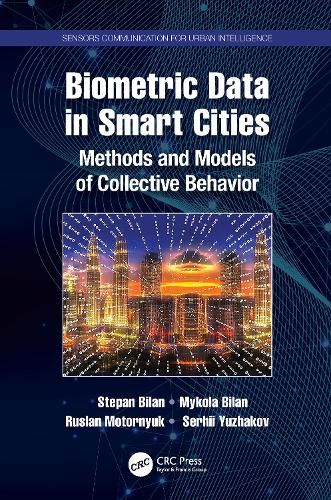Readings Newsletter
Become a Readings Member to make your shopping experience even easier.
Sign in or sign up for free!
You’re not far away from qualifying for FREE standard shipping within Australia
You’ve qualified for FREE standard shipping within Australia
The cart is loading…






In modern conditions of the development of intelligent systems to solve the problems of smart cities, more and more attention is paid to the construction of distributed intelligent systems, which, based on a network of sensors and specialized calculators, help residents and visitors of the city in real time to solve a whole range of complex problems that arise in an urban environment. In a smart city, much attention is paid to the processing of biometric information that comes from biometric sensors distributed throughout the city. Such biometric systems are multimodal and allow you to control the general condition of a person, and also help a person to move around the city and predict events within the city.
This book describes methods for processing biometric information in a smart city environment. The theoretical foundations of building a biometric multisensor network, which allows you to create a unified urban biometric community, are considered. The theoretical foundations of the parallel shift technology and the Radon transformation on cellular automata with a hexagonal covering are presented. On the basis of these technologies, methods of biometric identification by gait parameters and the geometric shape of the auricle are described, which are effectively used in a smart city. A method for tracking dynamic changes in the state of a smart city in real time is considered. Models of behavior of colonies of living organisms, their formation, movement and interaction are described on the basis of the technology of cellular automata with active cells. Models of behavior of active cells in meeting with unwanted cells and models of combining and destruction of active cell colonies are also described.
This book is intended for undergraduate, graduate students and specialists working and conducting research in the field of biometric information processing, as well as in the development and construction of distributed intelligent systems.
$9.00 standard shipping within Australia
FREE standard shipping within Australia for orders over $100.00
Express & International shipping calculated at checkout
In modern conditions of the development of intelligent systems to solve the problems of smart cities, more and more attention is paid to the construction of distributed intelligent systems, which, based on a network of sensors and specialized calculators, help residents and visitors of the city in real time to solve a whole range of complex problems that arise in an urban environment. In a smart city, much attention is paid to the processing of biometric information that comes from biometric sensors distributed throughout the city. Such biometric systems are multimodal and allow you to control the general condition of a person, and also help a person to move around the city and predict events within the city.
This book describes methods for processing biometric information in a smart city environment. The theoretical foundations of building a biometric multisensor network, which allows you to create a unified urban biometric community, are considered. The theoretical foundations of the parallel shift technology and the Radon transformation on cellular automata with a hexagonal covering are presented. On the basis of these technologies, methods of biometric identification by gait parameters and the geometric shape of the auricle are described, which are effectively used in a smart city. A method for tracking dynamic changes in the state of a smart city in real time is considered. Models of behavior of colonies of living organisms, their formation, movement and interaction are described on the basis of the technology of cellular automata with active cells. Models of behavior of active cells in meeting with unwanted cells and models of combining and destruction of active cell colonies are also described.
This book is intended for undergraduate, graduate students and specialists working and conducting research in the field of biometric information processing, as well as in the development and construction of distributed intelligent systems.